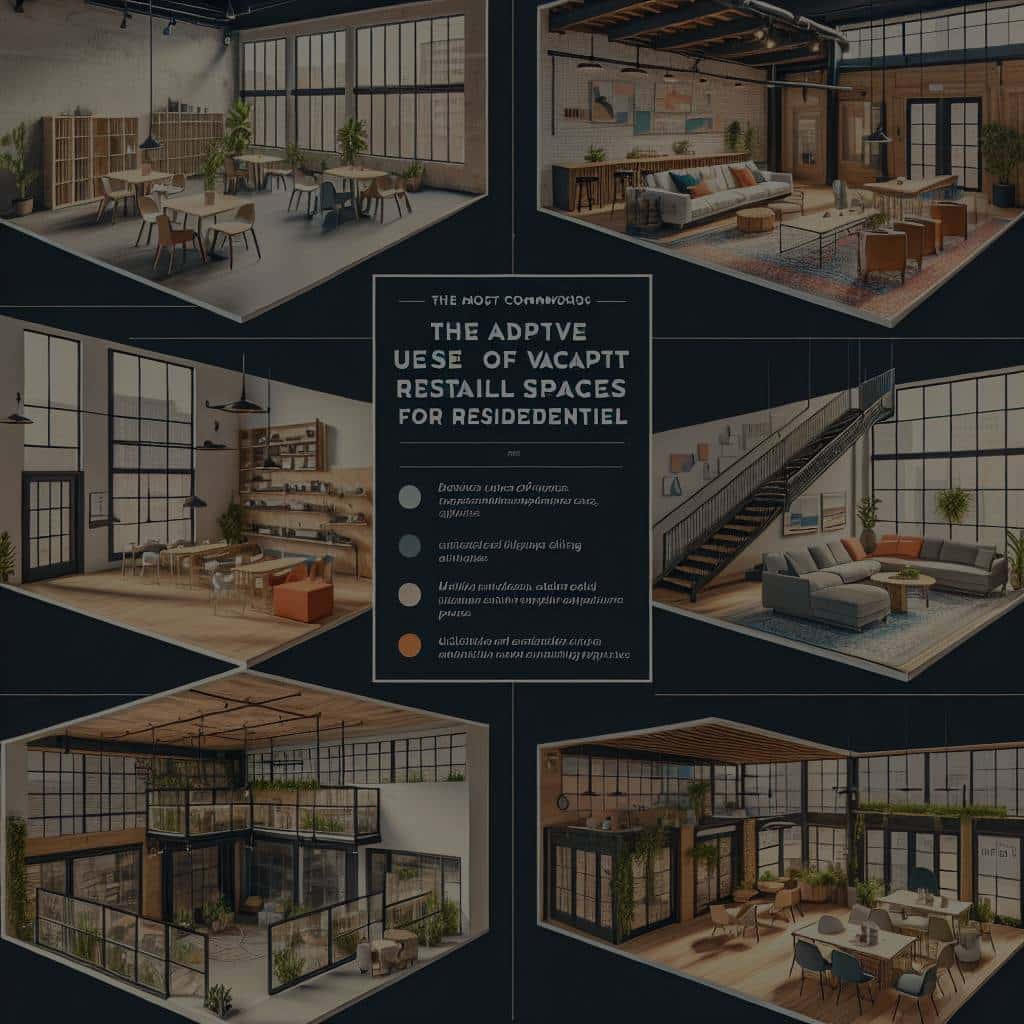What Are the Trends in Adaptive Reuse of Vacant Retail Spaces for Residential Purposes?

In today’s ever-changing real estate landscape, the adaptive reuse of buildings and spaces is a movement that is gaining traction, particularly in the commercial sector. This term, which may be unfamiliar to some, refers to the practice of repurposing vacant buildings – often commercial or industrial structures – for new uses, such as residential housing. This sustainability-focused strategy not only breathes new life into underutilized spaces but also offers a creative solution to housing shortages in many city centers. Let’s delve into the trends shaping the adaptive reuse of vacant retail spaces for residential purposes.
Adaptive Reuse: A Sustainable Solution in the Real Estate Industry
At the intersection of sustainability and real estate, adaptive reuse projects present a viable alternative to traditional construction methods. In the past, when a commercial property became vacant, it was often demolished and replaced with a new building. Today, with an increasing focus on sustainability and preserving architectural heritage, more and more property owners and developers are choosing to adaptively reuse these buildings.
This might interest you : How to Maximize Space Efficiency in Micro-Apartment Designs?
The adaptive reuse of commercial spaces like retail stores, warehouses, and offices into residential housing is particularly prevalent in cities where land is scarce and property values are high. Converting these structures into housing not only helps to alleviate housing shortages but also contributes to neighborhood revitalization, creating a more vibrant and diverse cityscape.
Moreover, adaptive reuse projects can also contribute to a city’s sustainability goals. These projects typically require fewer resources than new construction and produce less waste, helping to reduce the environmental impact of the real estate industry.
This might interest you : What Innovative Techniques Can Be Used for Land Remediation in Urban Development?
The Rise of Residential Conversions in Retail Spaces
As e-commerce continues to grow, brick-and-mortar retail stores are increasingly becoming vacant. This trend, coupled with high demand for housing in city centers, is driving the conversion of retail spaces into residential units. These conversions are becoming more popular as they offer unique living spaces in prime locations, often with amenities like proximity to shops, restaurants, and public transportation.
In some cases, entire shopping malls are being transformed into mixed-use developments that incorporate housing alongside retail and office spaces. This not only provides a solution to the retail vacancy issue but also creates a more vibrant and diverse community, where residents can live, work, and shop in the same area.
The Challenges and Opportunities of Adaptive Reuse Projects
Adaptive reuse projects can present a unique set of challenges compared to traditional construction. For example, older buildings may have structural issues or contain hazardous materials that need to be addressed. There may also be zoning and building code regulations that limit what changes can be made to the property.
However, these challenges can also lead to opportunities. In dealing with these constraints, developers and architects are often pushed to come up with innovative design solutions, resulting in unique and characterful homes.
Furthermore, because these projects are typically located in established neighborhoods, they often offer unparalleled access to amenities, public transit, and job opportunities. These factors make adaptively reused properties highly desirable in the real estate market.
The Future of Adaptive Reuse in the Residential Sector
Given the current trends, it appears that the adaptive reuse of vacant retail spaces for residential purposes will continue to gain popularity in the coming years.
For one, the shift toward remote work sparked by the COVID-19 pandemic has led to an increased need for homes with office or workspace. This could drive more conversions of vacant office buildings into residential units, with dedicated spaces for home offices.
In addition, as consumers continue to shift towards online shopping, more retail spaces are likely to become vacant and ripe for conversion.
While it is difficult to predict the full range of impacts these trends will have on the real estate market, it is clear that adaptive reuse will play a key role in shaping the future of our cities.
Overcoming Obstacles for Successful Adaptive Reuse Projects
Adaptive reuse projects, while providing a sustainable solution to the housing crisis, do present their own unique set of challenges. This route isn’t always seamless, as vacant retail spaces and other commercial real estate can often come with underlying structural issues or the presence of hazardous materials. These issues require careful attention and resolution before the transformation into residential units can commence. Also, zoning and building code regulations may pose restrictions on the extent of alterations that can be made to these structures.
Despite the potential obstacles, the rewards of successfully completed adaptive reuse projects are significant. The challenges often push architects and developers to devise innovative design solutions, leading to the creation of distinctive, characterful homes that blend historical charm with modern amenities. Moreover, since these projects are usually situated in prime, established neighborhoods, the adaptively reused properties boast superior accessibility to amenities, public transit and job opportunities. These key factors contribute to making such revitalized properties highly sought-after in the real estate market.
The Evolving Real Estate Landscape: Adaptive Reuse on the Rise
As we look to the future, it becomes evident that the adaptive reuse of vacant retail spaces into residential units is not just a passing trend, but a transformative movement that is here to stay. The ongoing shift towards remote work, catalyzed by the COVID-19 pandemic, has led to a surge in the demand for homes with dedicated office space. This trend is expected to fuel more office conversions into residential units, replete with designated home office areas.
Furthermore, the continuous growth of e-commerce is rendering more and more brick-and-mortar retail spaces redundant. As these retail spaces become increasingly vacant, they present ample opportunities for adaptive reuse into residential housing. This trend of reuse retail into residential housing not only addresses the housing supply issue but also contributes to the revitalization of neighborhoods.
While it’s challenging to fully predict the reach and impact of these evolving trends on the real estate landscape, one thing is clear: the adaptive reuse of commercial real estate into residential units will play a crucial role in shaping the cities of the future. The trend embodies a sustainable, creative, and innovative approach to real estate development, merging the need for housing supply with the drive for neighborhood revitalization and sustainability. Adaptive reuse is not just a trend, but a reflection of the evolving needs and priorities of society.
